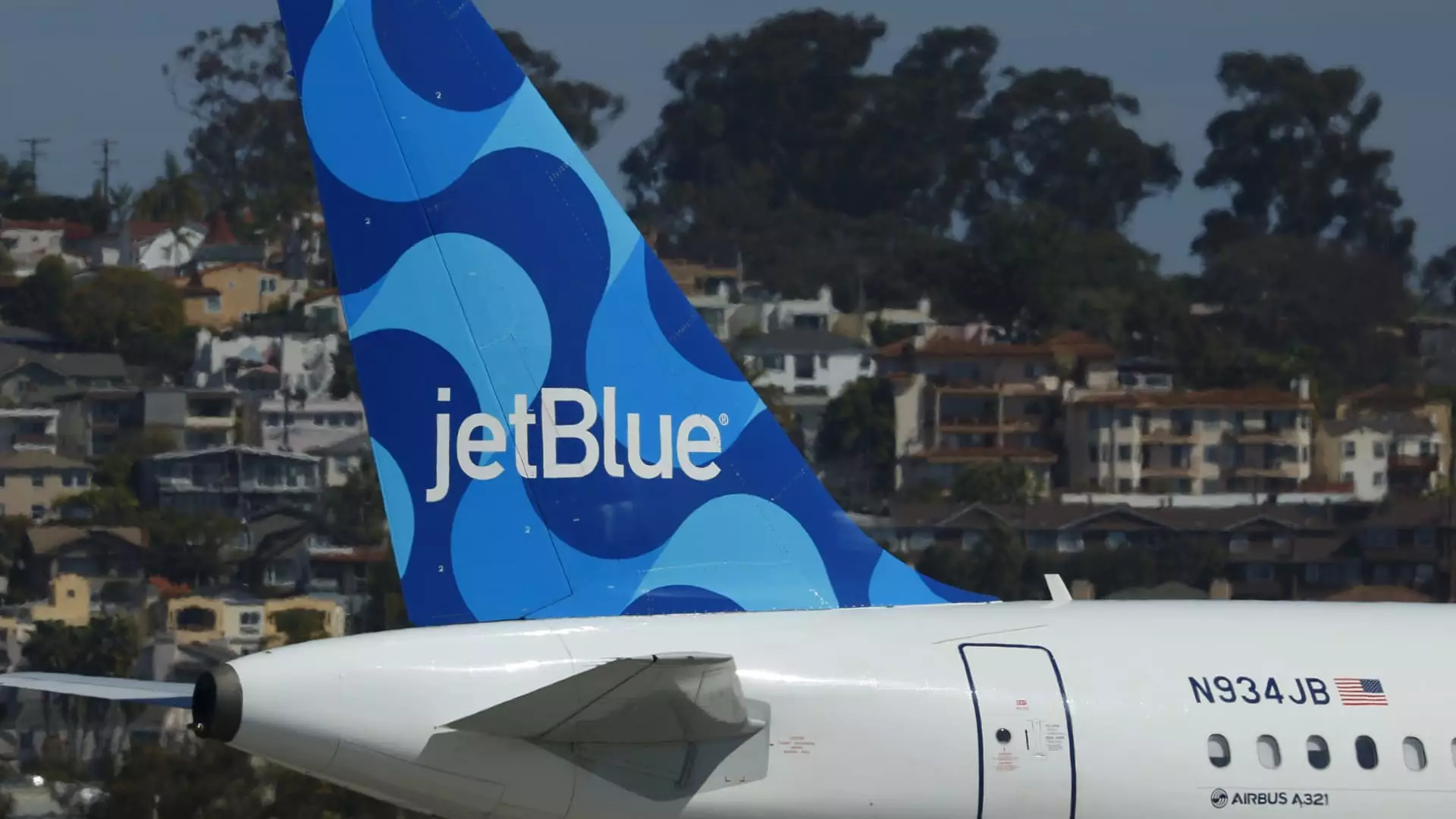In the latest dispatch from JetBlue Airways, CEO Joanna Geraghty has sounded the alarm regarding the airline’s precarious financial state. The sentiment among stakeholders is increasingly pessimistic, with break-even operating margins for this year deemed “unlikely.” This is a stark admission from a company that, just a few years ago, was lauded for its innovative approaches and customer-centric policies. Instead of soaring to new heights, JetBlue now finds itself facing turbulent skies caused by weaker-than-expected booking demand. The struggles of JetBlue serve not only as a cautionary tale for the airline but should also be viewed as a broader signal of potential volatility within the aviation sector.
Demand Dips and Economic Uncertainties
Reports suggest that U.S. airlines, including JetBlue, are bracing for what appears to be a sustained downturn in travel demand, particularly for domestic routes. The data does not lie—airfares plummeted by 7.3% year-on-year as recorded by the U.S. Department of Labor. Such declines render the airline industry’s recovery strategy appear futile, revealing deeply ingrained vulnerabilities. The ripple effect of diminishing demand is astonishing: airlines are scrambling to trim capacity and pull financial forecasts in the face of economic uncertainty. JetBlue’s situation is emblematic of a sector grappling to navigate the complexities of fluctuating economic conditions and changing consumer behavior.
The Cost-Cutting Measures and Their Implications
In the face of this pressing crisis, JetBlue has announced a suite of cost-cutting measures aimed at slowing the financial bleeding. Sadly, this situation feels like déjà vu; the airline has previously grappled with the fallout from failed acquisitions, notably its failed merger with Spirit Airlines. It’s reasonable to question—do these repeated failures indicate a larger issue within the airline’s leadership? Cutting off-peak flights and discontinuing less profitable routes may seem like sensible strategies, but they reveal an industry-wide preference to scale back instead of innovating.
The axing of the Airbus A320 jets’ retrofitting plans underscores an unsettling reality: the paradox of an airline pouring money into premium-class offerings while simultaneously trying to staunch losses through drastic cutbacks. It’s as if JetBlue is trying to play both sides, losing sight of a coherent strategy. A focus on exclusivity may not only alienate budget-conscious travelers but could also leave JetBlue exposed to the whims of an economy that is far from stable.
Private Partnerships and Pockets of Potential
However, it isn’t all doom and gloom. JetBlue’s recent partnership with United Airlines is a strategic move that could provide a much-needed lifeline. Their collaborative efforts to enable customers to book flights across both airlines while earning frequent flyer miles could draw in a diverse pool of travelers, providing some temporary relief. Yet, the airline’s precarious financial footing raises questions about whether these partnerships are merely band-aids over a deeper wound.
And while JetBlue’s commitment to hire front-line employees demonstrates an investment in enriching customer service, how does it reconcile that with impending cuts to leadership positions? Balancing growth with austerity is no easy task, particularly when key management roles may need to be consolidated. This gives off an impression of misalignment within the corporate hierarchy, highlighting a lack of cohesive understanding about the direction in which the airline is headed.
Looking Ahead: The Need for a Strategic Overhaul
Ultimately, JetBlue’s current malaise requires not just tactical financial cuts but a strategic overhaul. The airline’s continued investment in airport lounges and domestic first-class seats signifies a forward-looking mindset, yet it feels disconnected from the pressing realities on the ground. As the airline industry reckons with post-pandemic challenges, JetBlue must rise to the occasion. The worse it gets, the clearer the need for an innovative and adaptable approach that prioritizes the customer while establishing financial sustainability.
The success of an airline is intrinsically linked to the customer experience, and JetBlue must focus on delivering value, rather than falling into the trap of merely chasing profit margins. Failing to do so could leave JetBlue as just another cautionary tale in the turbulent history of the airline industry, rather than the shining example it once aspired to be. The path forward should not only embrace frugality but should ignite a new era of ingenuity and customer engagement dedicated to restoring trust and loyalty among air travelers.

